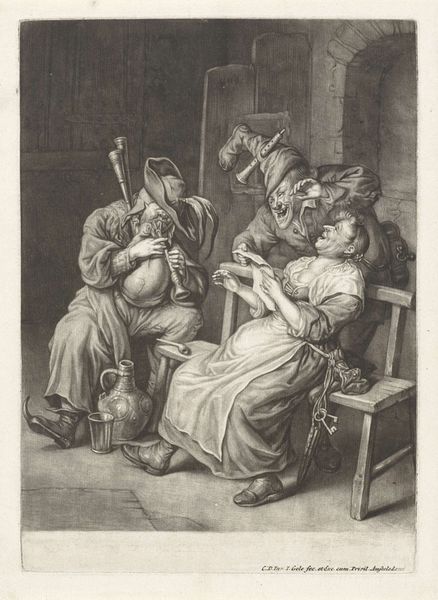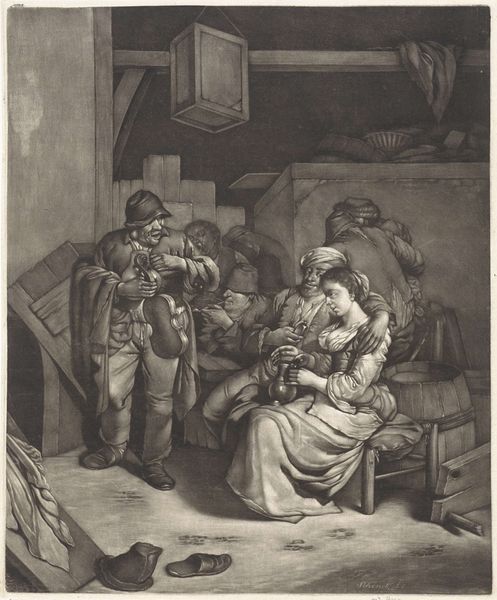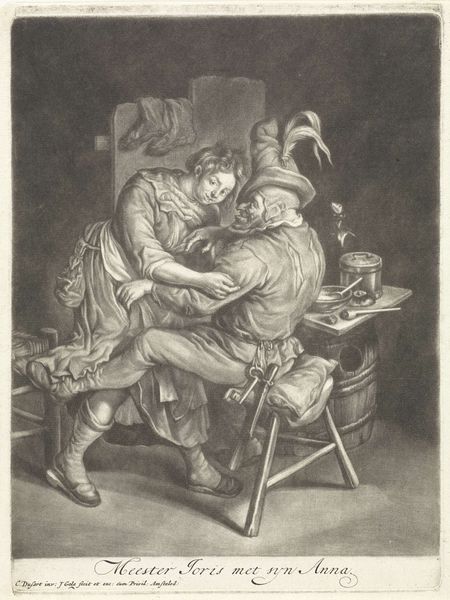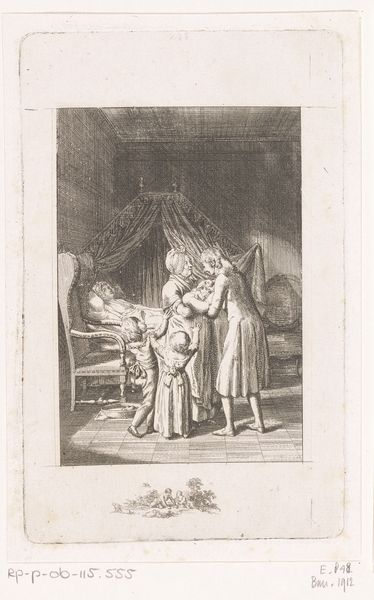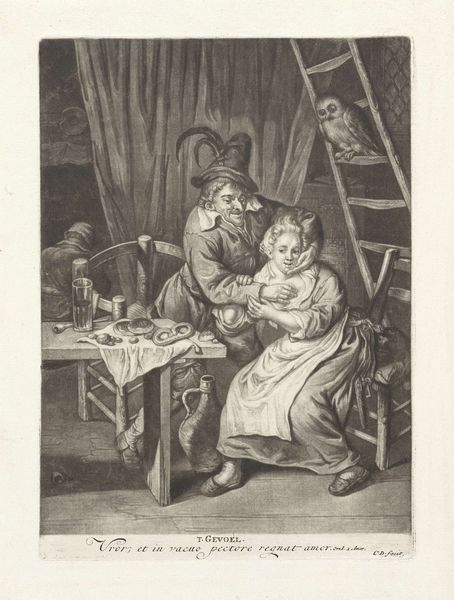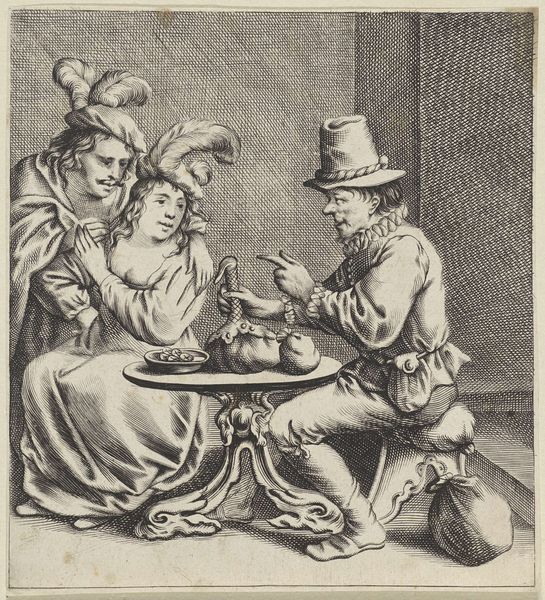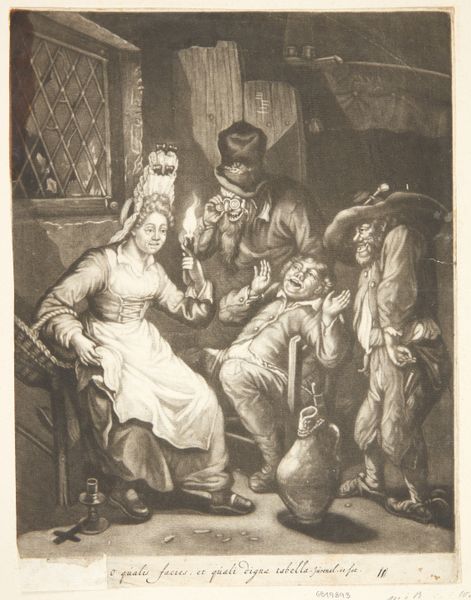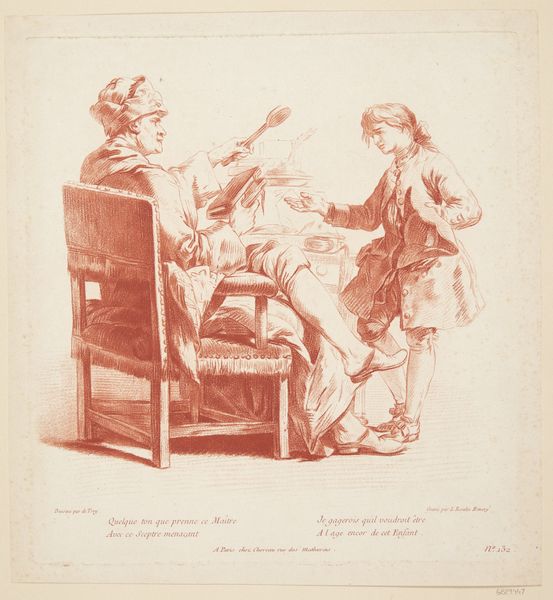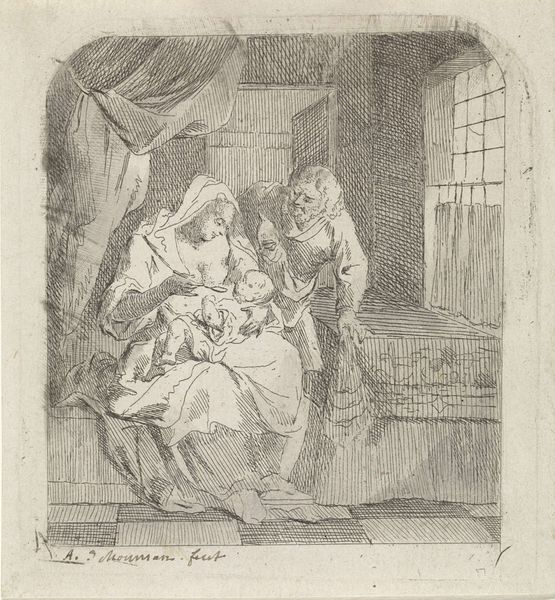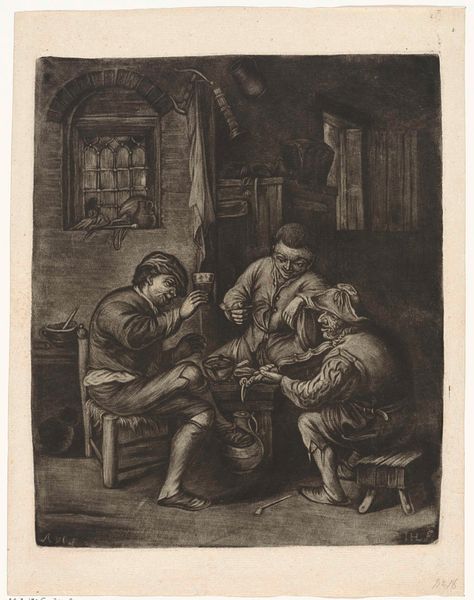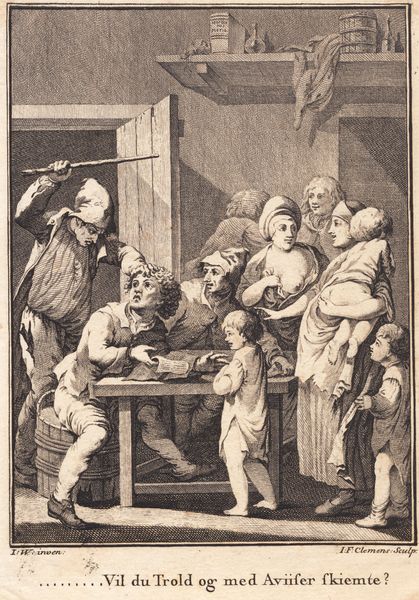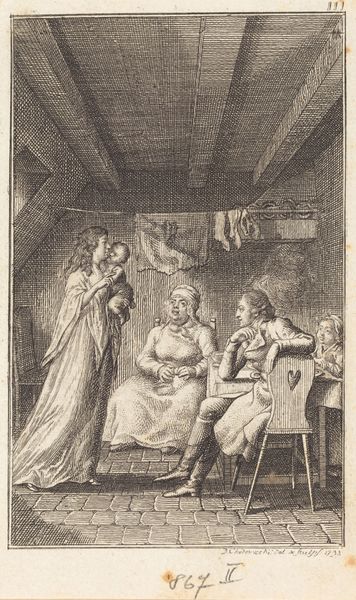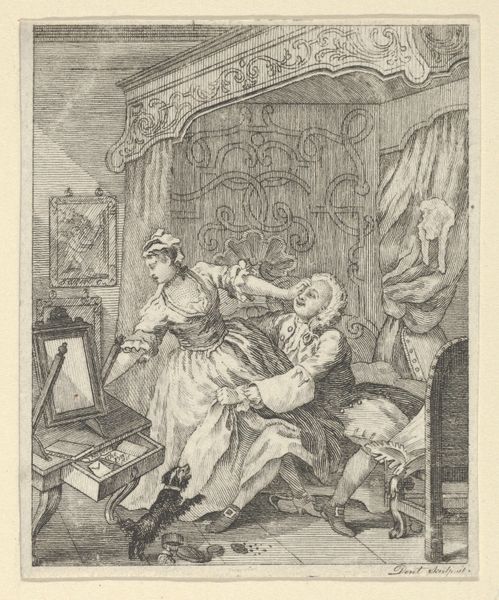
print, mezzotint
#
baroque
#
dutch-golden-age
# print
#
figuration
#
portrait reference
#
mezzotint
#
genre-painting
Dimensions: 248 mm (height) x 184 mm (width) (bladmaal)
Editor: Here we have Cornelis Dusart's "Høresansen," made sometime between 1660 and 1704. It's a mezzotint print depicting a genre scene. The overall feeling I get is jovial, almost chaotic, with all these figures crammed together. What do you make of it? Curator: I see a careful orchestration of labor and leisure, presented through the very material of the mezzotint. Note how Dusart uses the mezzotint technique – traditionally used to reproduce paintings – to depict a common scene, blurring the lines between high art and the everyday. The production of the print itself, the labor involved in creating the image, speaks to the changing social status of art and its accessibility. The image depicts what seems to be a group of workers. Is this recreation or is it simply workers in their downtime? Editor: It’s interesting you focus on the production and accessibility aspect! I was caught up in the figures and the composition. Do you think the print’s existence challenged the dominant art forms of the time? Curator: Absolutely. Mezzotints like this made art more available, shifting patronage and consumption patterns. The subject matter - commoners making music, drinking - further democratized art, showing an interest in representing their working routines.. Consider also the intended audience – likely not the aristocratic elite who typically consumed paintings. What does the image suggest about material realities? Editor: Well, there's clearly an emphasis on the everyday. The worn clothing, the simple furnishings, even the chipped jug on the floor… It's a far cry from the idealized images of the aristocracy. I never would have thought to think of those elements! Curator: Exactly. It's not just about what is shown, but *how* it’s made, and for whom. Dusart’s print gives us insight into the labor of both the artisan and his subjects. Editor: I learned to look at this artwork in its context with the intended viewer. It really reframes it. Curator: And, critically, how the production process mirrors the represented content, challenging our conventional understandings of value and representation.
Comments
No comments
Be the first to comment and join the conversation on the ultimate creative platform.
